December 2019
From Flores in Guatemala we traveled on to San Ignacio in Belize. Already in advance travelers told us that Belize is more expensive than Guatemala and Mexico without offering more. Nevertheless, I wanted to discover this country, because I would only be traveling in South East Asia if I focus exclusively on the price/performance ratio.
Table of Contents
San Ignacio
A battered taxi took us to the nearby bus station, where after the first beer from Belize a discarded US school bus drove to the small town of San Ignacio.
There are some archaeological attractions in the vicinity of the town and the nature also offers a lot.
Caracol
Since the ATM cave tour (see below) was already very well booked the next day, I decided to first visit the Mayan city of Caracol, 80 km away from San Ignacio. It is the biggest one in Belize. At its peak around the 6th/7th century A.D. it probably had 120’000 inhabitants, twice as many as today’s Belize City. At that time, Caracol defeated the neighboring kingdom of Tikal in today’s Guatemala in armed conflicts. With the fall of the Mayan Empire, the fate of Caracol was also sealed. The settlement was finally abandoned in 1050 AD. In 1937 the city was rediscovered by a lumberjack in search of mahogany trees and is still surrounded by jungle. Large parts of the city have not yet been excavated.
Caana (‘Sky Palace’) is the largest building in Caracol and one of the largest man-made structures in Belize.

View from Caana Temple
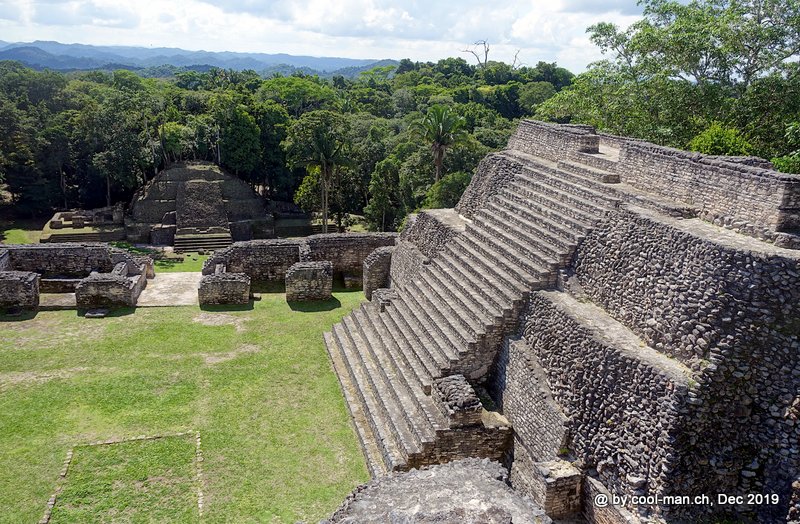
A face


Rio Frio Cave
On the way back we visited the Rio Frio cave, through which the river Frio flows.
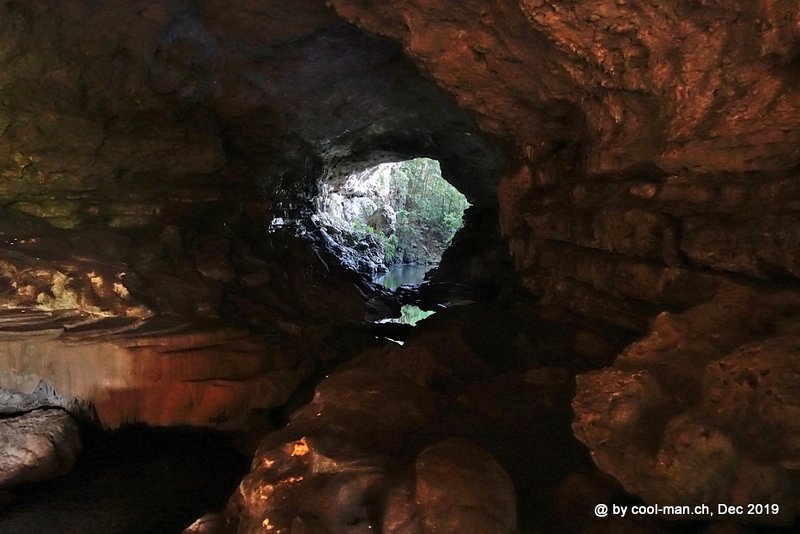
Rio On Pools
The last stop of this tour were the Rio On pools, where the river On flows in a beautiful landscape through several pools which invite for a swim.

Actun Tunichil Muknal (ATM) Cave
A colleague drew my attention in advance to the cave Actun Tunichil Muknal (or simply ATM). And indeed it was one of the highlights of my Belize trip.
On the one hand, the cave with its stalactites and stalagmites is geologically an experience and on the other hand, with the various Mayan artifacts and the sacrificed people, it is also historically significant.
After we left our tour bus, we walked 45 minutes to the entrance of the cave. We waded through a small river three times. The cave can only be visited with a tour and cameras are strictly forbidden after a tourist dropped his camera on a Mayan skull and damaged it a few years ago. I had chosen the right tour operator, because we were the first ones with our small group to enter the cave that morning. With helmet and headlamp we first swam a few meters in the cold water. For about an hour we followed our guide deeper and deeper into the cave, partly wading up to our necks in the water, then forcing ourselves through narrow rock openings and climbing. On the way I admired the mighty stalactites and stalagmites. Then we reached the main chamber, where we took off our shoes and walked on with only socks to protect the archaeologically valuable soil of the sacred area of the Mayas. Here mostly young people and even babies were sacrificed to appease the gods. To the left and right of our way we saw clay pots, skulls and skeletons. At the back of the cave was the most famous skeleton of the cave, where the bones are completely covered with minerals. This is why it is called ‘Crystal Maiden’.
Ajaw Chocolate & Crafts
Very interesting was also the visit to Ajaw Chocolate & Crafts, which processes cocoa as in Mayan times.
With a stone the dried cocoa beans are ground to a paste.
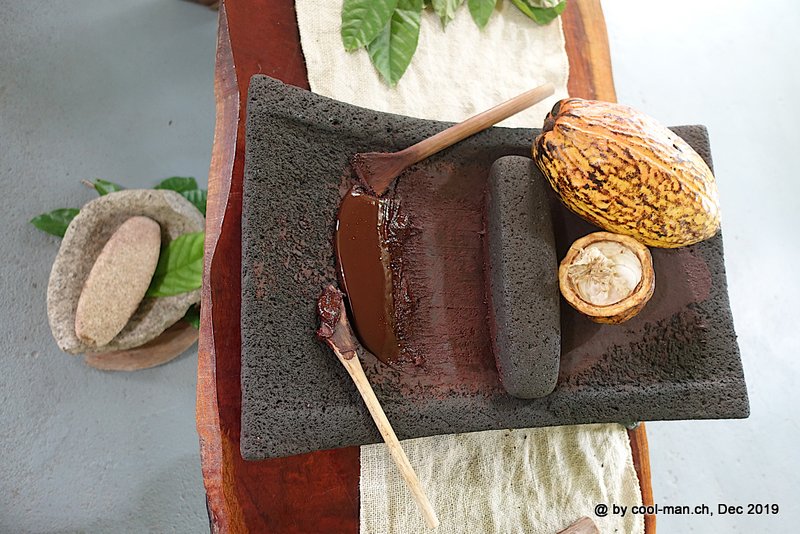
This paste is mixed with spices to make a drink, just like the Mayas used to drink it. The unique feature of this visit was that we could taste the intermediate products of each manufacturing process. Although I had already taken part in some chocolate tours, this was the first time I tasted the dried cocoa beans before they were roasted. I liked them so much that I bought a few bags of them.
Traveller’s Rum Tasting
Only a few meters away from Ajaw Chocolate & Crafts, the rum producer Traveller’s offers a rum tasting. I could taste more than 10 rums.

Some were flavored, others a few years old and stored in barrels. But since the rum at Traveller’s is made from molasses, a waste product of the sugar production, no rum convinced me. Against the intensive rum of the Botrans Distillery in Guatemala, Traveller’s had no chance.
I especially noticed the Panti Rippa (Panty Ripper), a drink for women, which as a basic recipe consists of rum and pineapple juice. Nobody knows anymore where the name comes from. But there is a guess … The drink for men is called Gifiti. It is a rum-based bitter with pickled roots and herbs and is said to enhance potency. Therefore, it complements the Panti Rippa perfectly.

Near San Ignacio is the Mayan site of Xunantunich. Since we had already seen many Mayan sites in Guatemala and my travel partner wanted to finally go to the sea, we decided not to visit it.
Caye Caulker
The next day we traveled by bus to Belize City, 114 km away, and then by ferry to Caye Caulker Island. It is a little more than 5 km long, almost everywhere there are buildings and there is no beach. Nevertheless island feeling arises, because all roads are sandy. It is a trendy island with many good restaurants and great morning and evening scenes. Many jetties lead out into the sea from where you can swim.
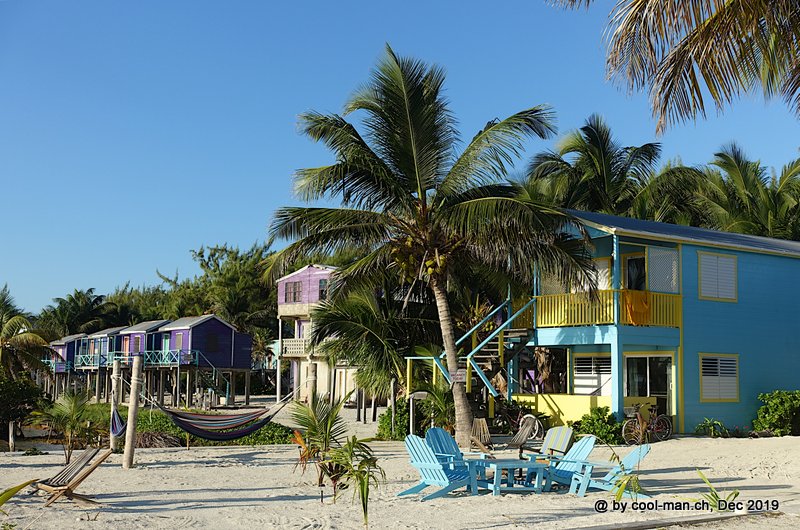
Sunrise

Countless pelicans fished in the waters around Caye Caulker.
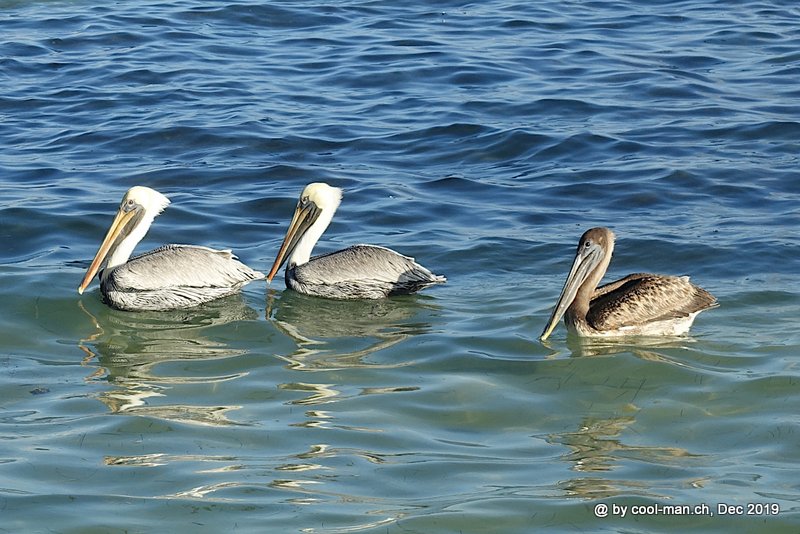
Lobster is available in almost every restaurant during the season from mid-June to mid-February. This delicacy is already on the menu from USD 10. They are either caught by divers or with traps.
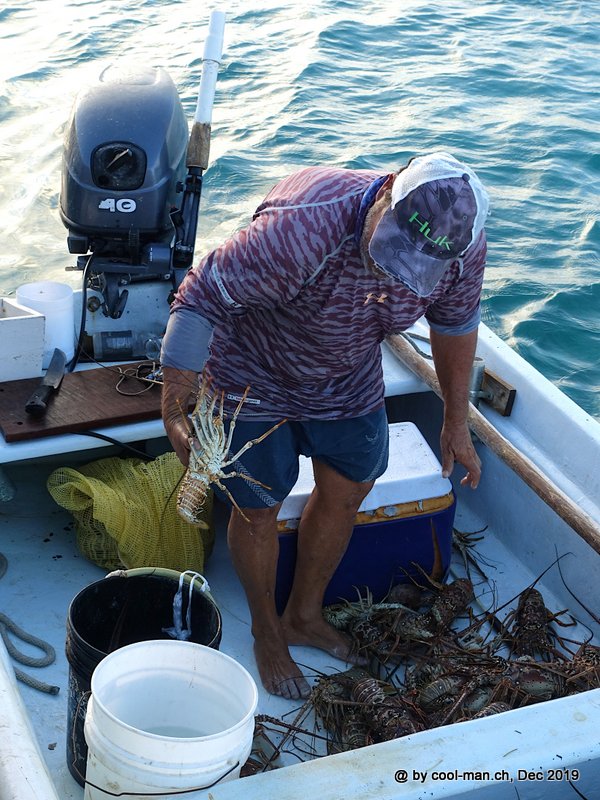
Another specialty was the conch, a large sea snail, which produces a particularly beautiful shell. It is placed on this plate in the front.
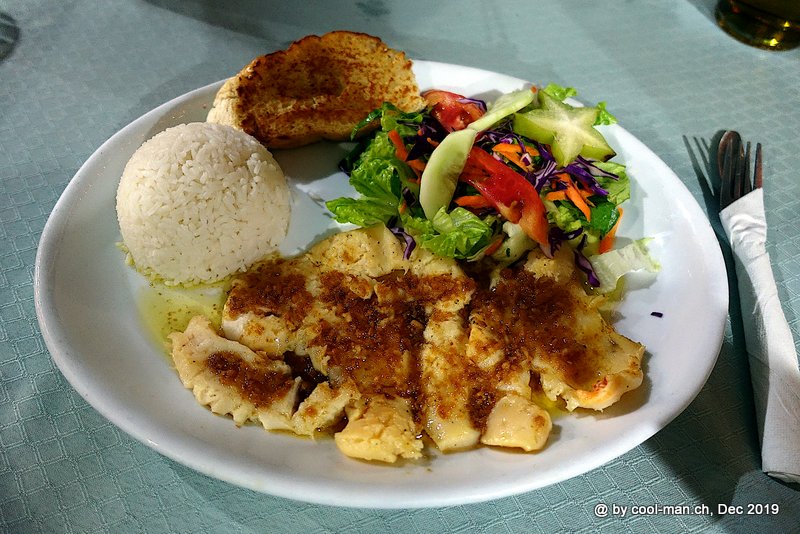
I thought these animals were protected. But that is not necessary, because they occur in great numbers. I saw dozens in the water and hundreds of these shells, from which the meat has already been taken, in heaps.
The shell of the conch

Snorkeling tour to Hol Chan Marine Reserve
For me as an underwater enthusiast, the all-day snorkeling trip to Hol Chan Marine Reserve was the highlight of my Caye Caulker stay, as the pictures show.
As soon as I was in the water I saw this Great Barracuda. This is all the more astonishing as I have only seen a barracuda of this size once while snorkeling (in Raja Ampat, Indonesia).

Horse-Eye Jack
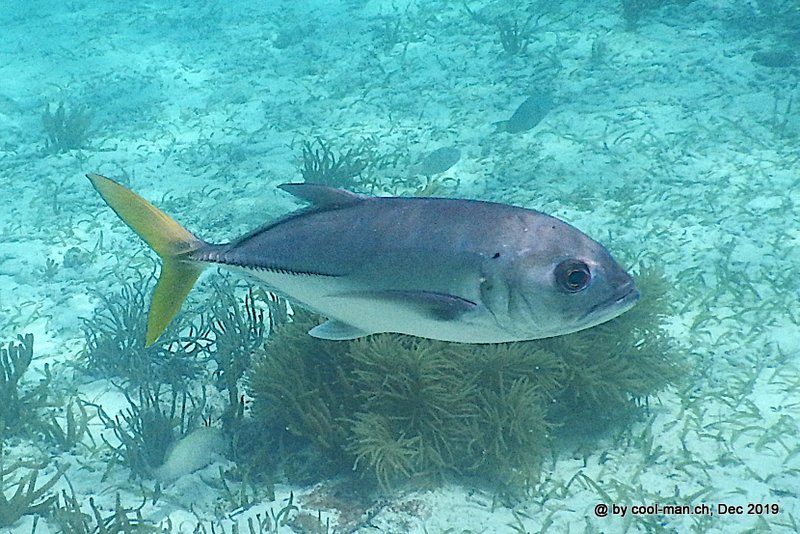
Spotted Eagle Rays
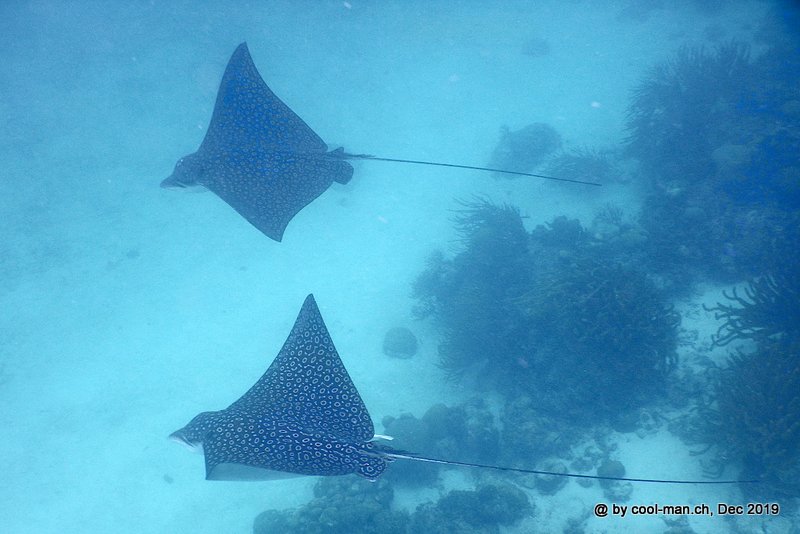
Southern Stingray
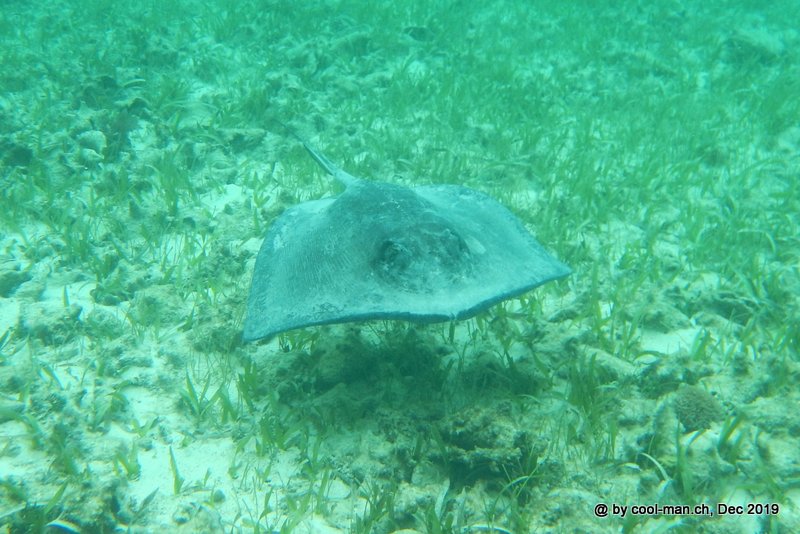
Blue Tang Surgeonfish

Hawksbill turtle, which is cleaned by Blue Tang Surgeonfishes

This turtle was so curious that it knocked against my diving goggles with its beak.
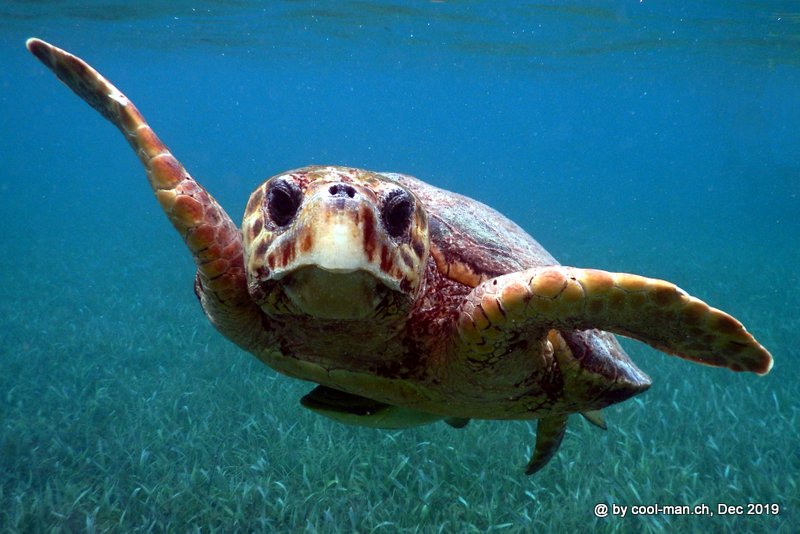
Grey Triggerfish
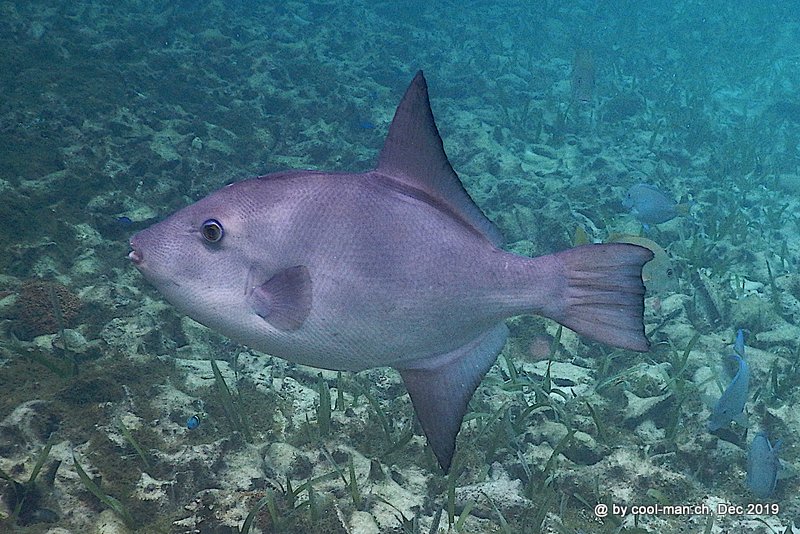
Nurse Shark
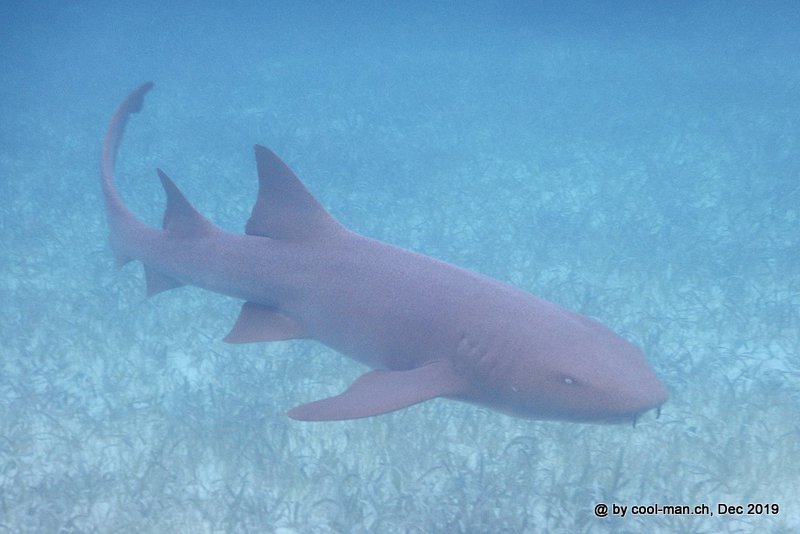
West Indian Manatee
These strange animals have impressed me very much. They are herbivorous mammals, found in salt and fresh water.
Since I took many pictures on the Hol Chan Marine Reserve snorkeling trip, the battery was empty when we reached the manatees. I took these pictures from a film from a Swiss man, who in turn received it from his tour guide.

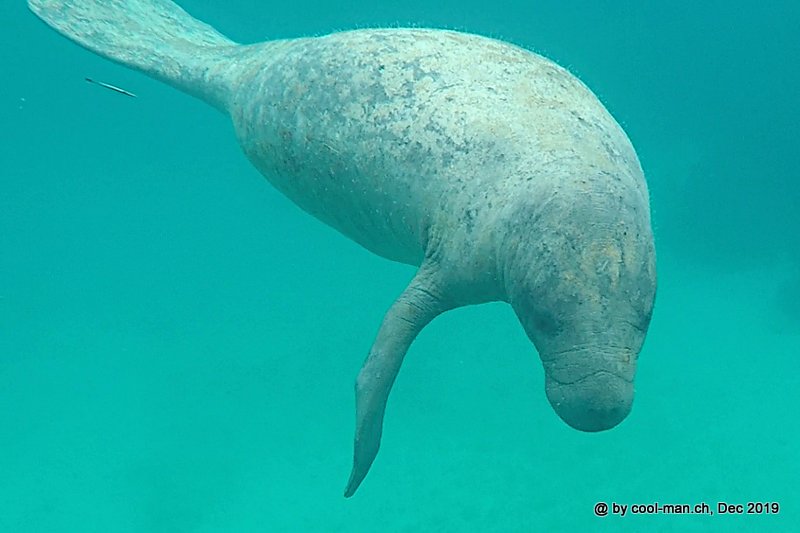
Finally we fed Tarpons, protected bony fish, from the boat. Now that I knew the place where the Tarpons swam around to get food, I came back the next day as a snorkeler and watched these fish under water as good as I could, because the visibility was very poor.
Atlantic Tarpon
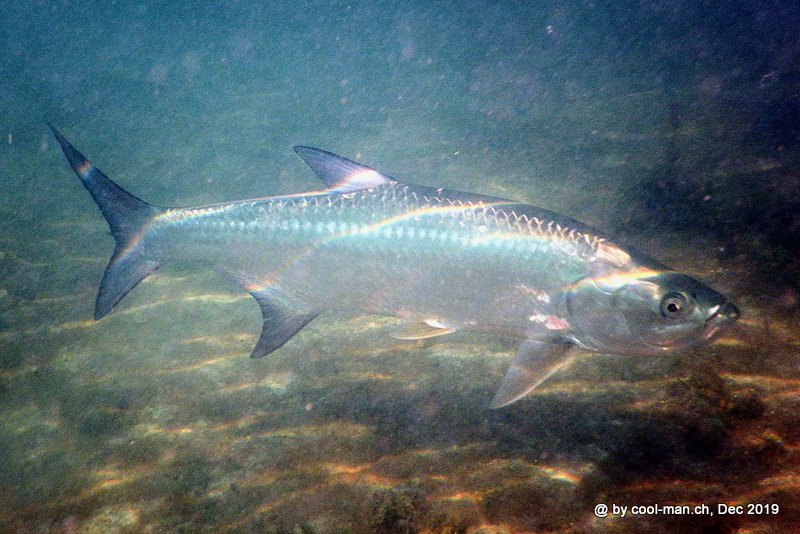
The five days passed quickly. We said goodbye to the great morning and evening scenes, the many pelicans and the trendy restaurants. I traveled on to the coastal town of Dangriga, from where the boats leave for the reef island Tobacco Caye. Belize was too expensive for my travel partner, so she continued her journey to Mexico.
Tobacco Caye
Arriving in Dangriga in the afternoon, I didn’t know at first whether a boat would leave for Tobacco Caye the same day. I was lucky. Other tourists had already ordered a boat and I could join.
Also on Tobacco Caye luck was on my side, because the owner of the resort gave me the best bungalow and I paid even less than the other tourists. With this he rewarded me for booking directly instead of through booking platforms as he did not have to pay any commissions for me.
My bungalow
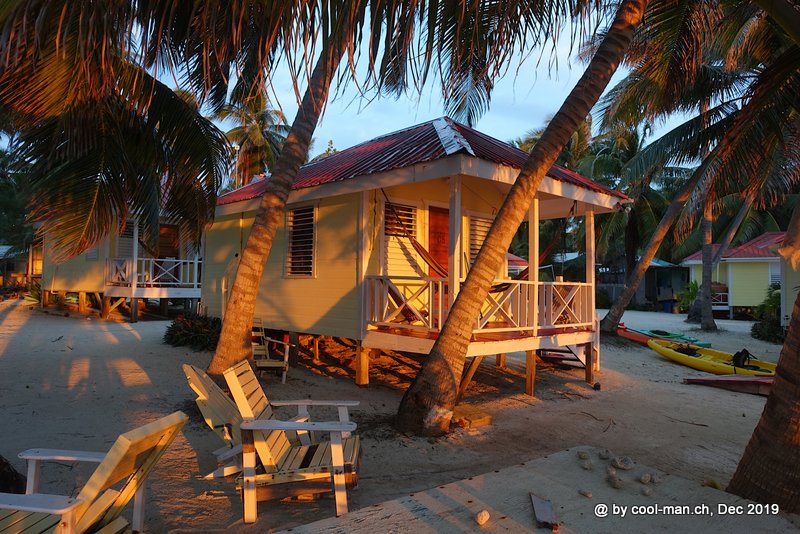
On the island there were seven accommodations. Even two bars opened in the evening where I met other travelers.
One of the two bars

Evening atmosphere
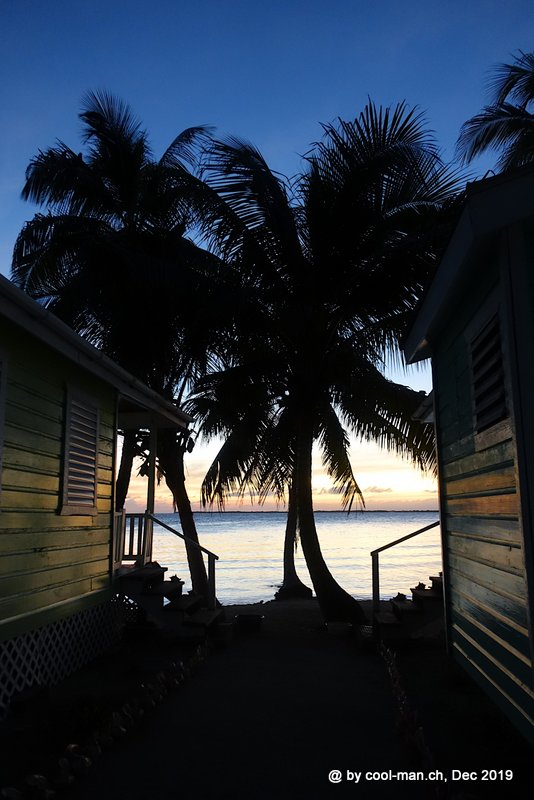
Right from the shore there were several snorkeling areas. One was full of corals with the usual reef fish. Remarkable were the many sea fan corals, which I rarely see. I also encountered a big lobster in this area in its cave.
Fan corals and a swarm of snappers
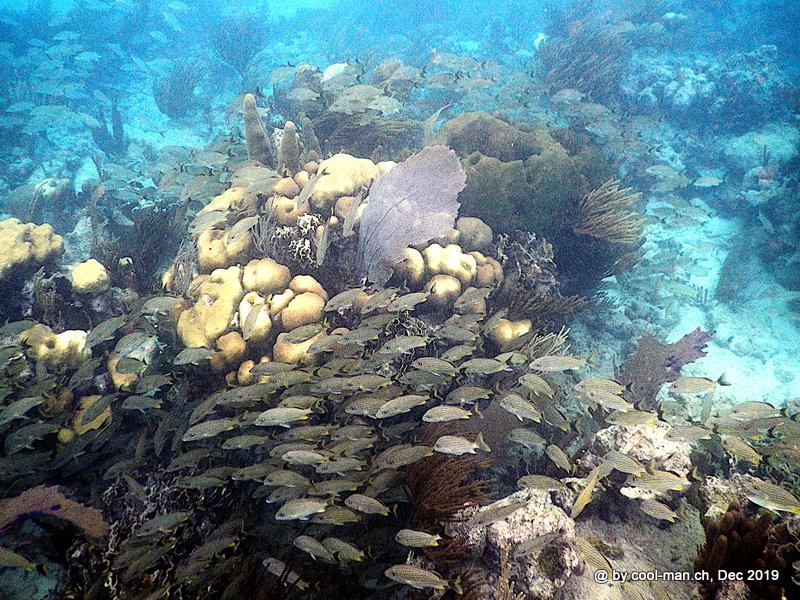
A very special coral

Gray Angelfish

Scribbled Leatherjacket Filefish or Scrawled Filefish
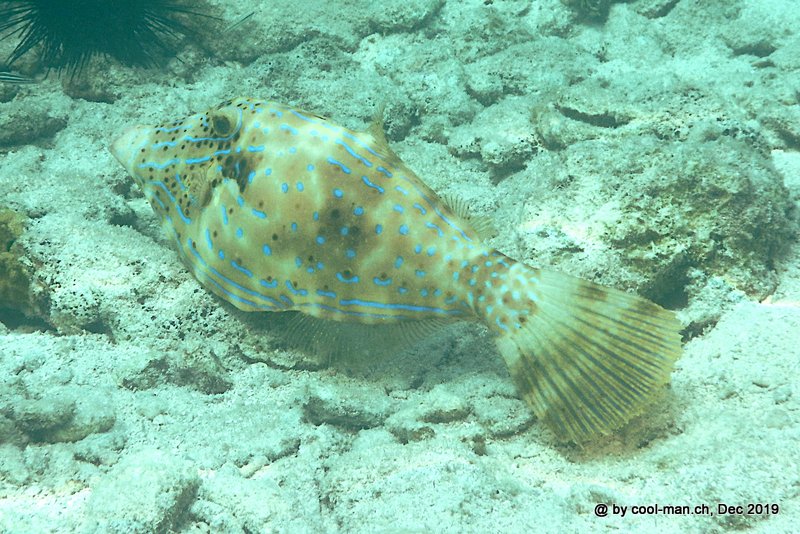
Lobster

The second was a large area with sea grass and sand, where I met many barracudas, stingrays and spotted eagle rays, sometimes two or even three together.
Southern Stingray

Spotted Eagle Rays


A juvenile barracuda

Manatees should also be present in this area early in the morning. Although I searched for them several times right after sunrise, I did not find them.
The third area was shallow. Here I met smaller fish. Some lived well camouflaged in the sea grass. I also met a hermit crab in the water.
A juvenile snapper

Cigar Wrasse
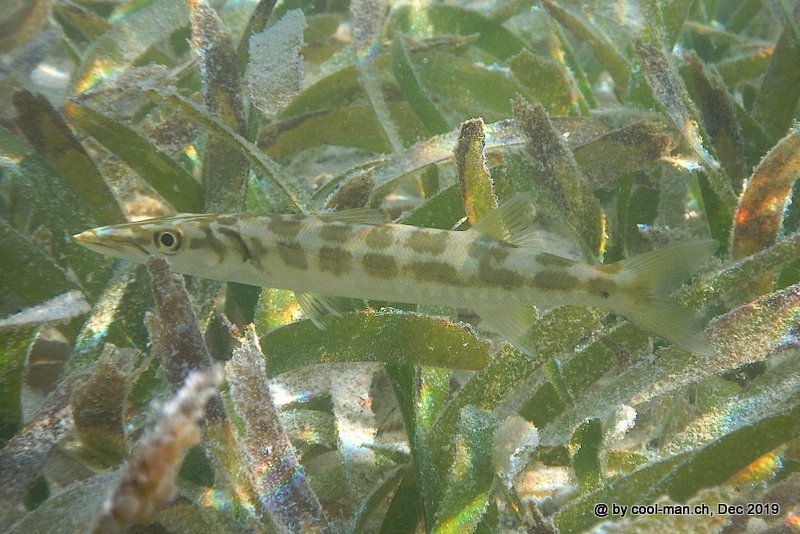
Hermit Crab

Dusky Gregory

At the pier, the stingrays came by to eat the food leftovers that were thrown away. Here are nine of them in this picture.
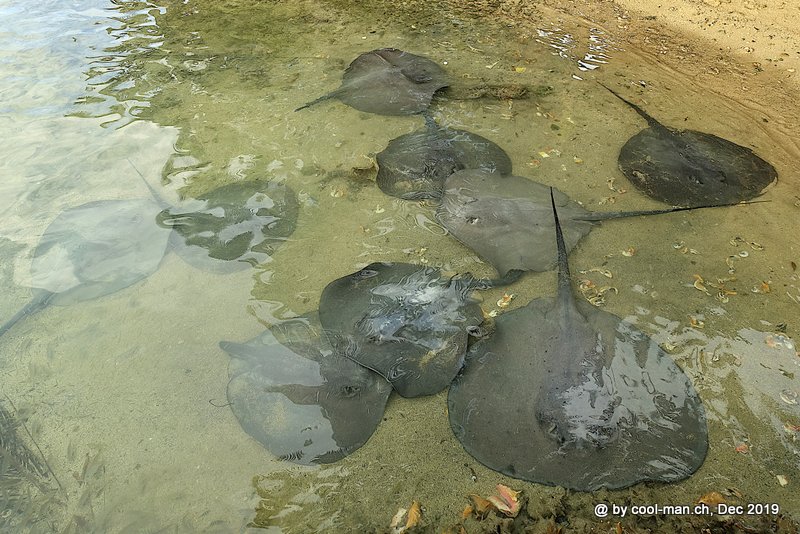
Under the pier I also found a whole heap of sea snail shells, which people deposited in the sea after eating the snail.

After four days on Tobacco Caye I continued my journey to Hopkins, the starting point for the reef stay on Glover’s Atoll.
Hopkins
Hopkins is a small seaside town in the south of Belize City. The beach of the town is not cleaned, so that a lot of rubbish accumulates in this section and therefore swimming there is no fun. A few kilometers further south there are a few nice resorts with very good restaurants and cleaned beaches.
From my guesthouse in Hopkins I visited the resorts every day by bicycle and enjoyed the great food right on the beach. I was lucky that at this time the moon was full and I could watch the moon rising over the sea from the restaurants.
A resort just outside of Hopkins with cleaned beach

Moonrise
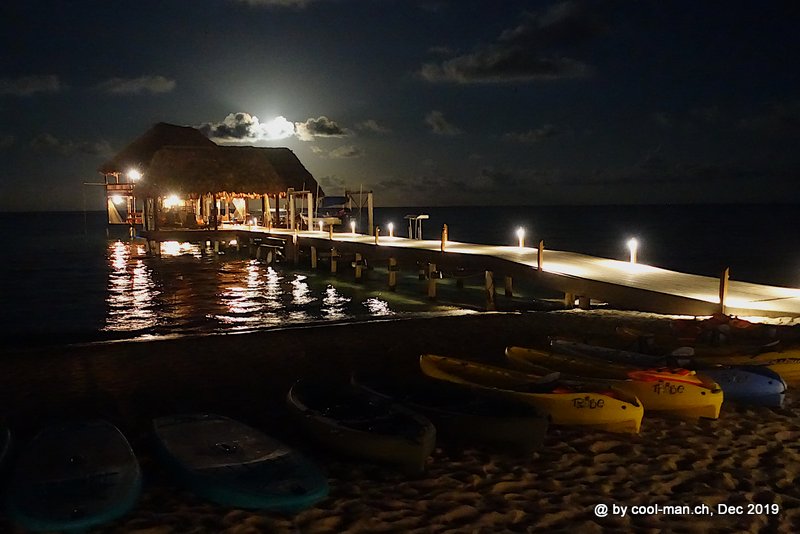
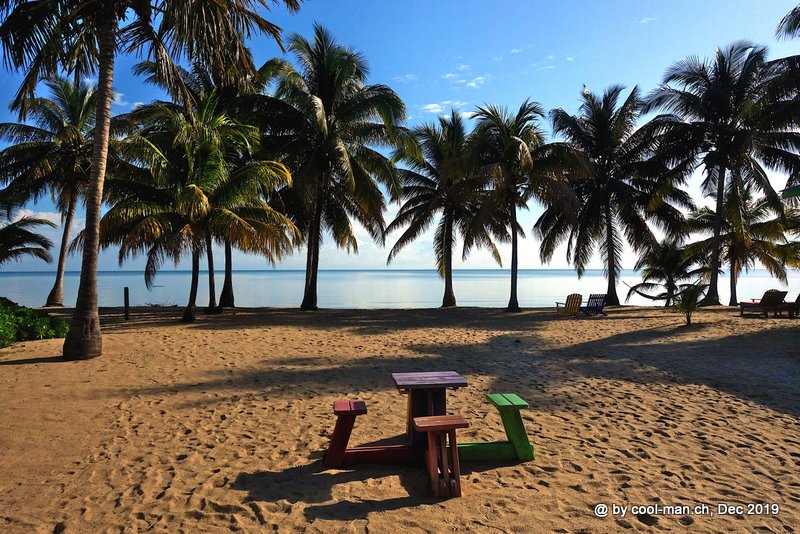
Christmas in Belize
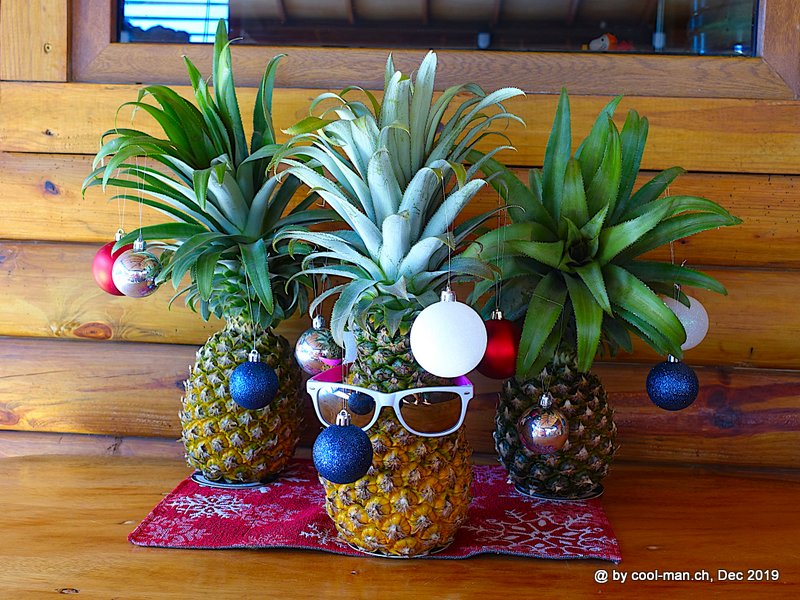
The Black Spiny-Tailed Iguanas are common.
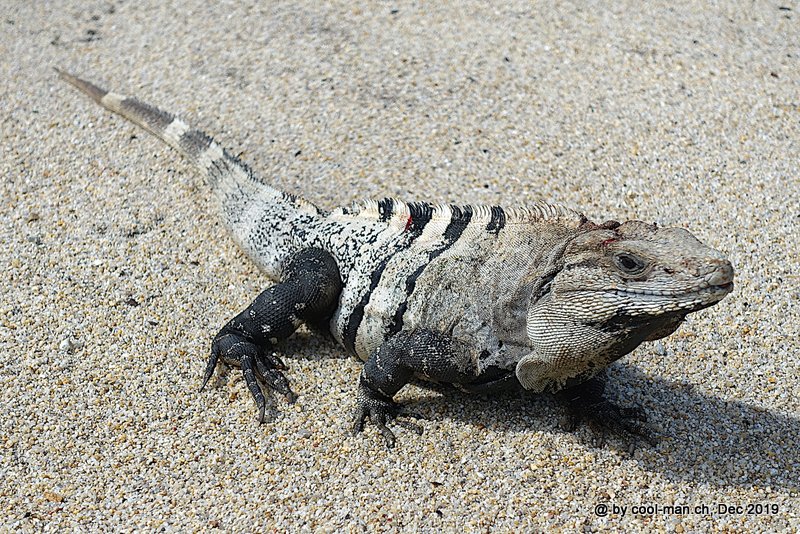
A beauty in Belize on a beer advertisement
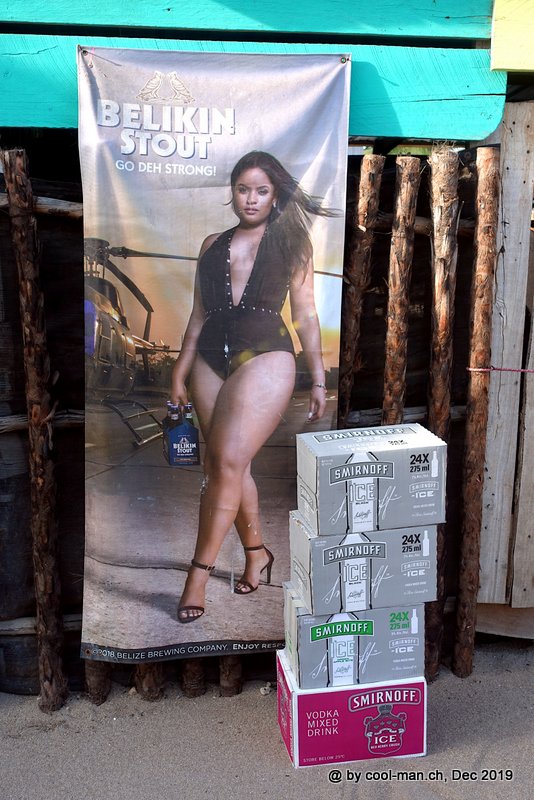
Glover’s Atoll
On Sunday the boat departed from the Sittee River Marina near Hopkins to Glover’s Atoll. Because of the many photos I describe my stay on Glover’s Atoll in a separate website, which you can find under this link.
Back in Hopkins my next destination was the village Orange Walk in the north near the Mexican border. Two tourists had already organized a taxi in Hopkins to Belize City. I could join them. I hoped to catch a bus from Belize City to Orange Walk the same day. But since we had a longer break for lunch on the way, we arrived in Belize City only at dusk. So I had no other choice than to stay overnight in this not very attractive city.
Belize City
Belize City is a run-down city with no sights. In the evenings the city is deserted. I walked 10 minutes to the next restaurant. I felt insecure, but there were no unpleasant incidents.
A typical street in Belize City
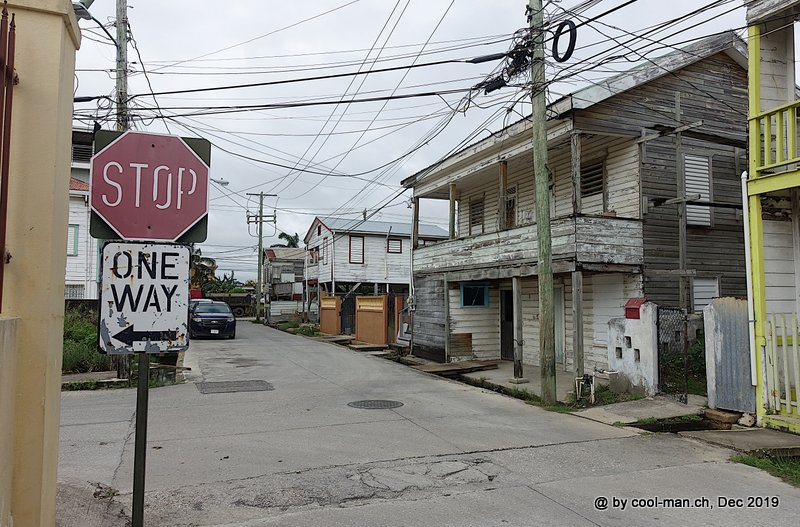
Orange Walks
The next morning I took the bus from Belize City to Orange Walks, where I stayed in a bungalow right at the river ‘New River’. The river is home to crocodiles that I saw swimming a few times right in front of my bungalow. But the friendly owner of the bungalows and former football coach of the national football team assured me that the crocodiles don’t bother the guests.

Morning mood at the New River
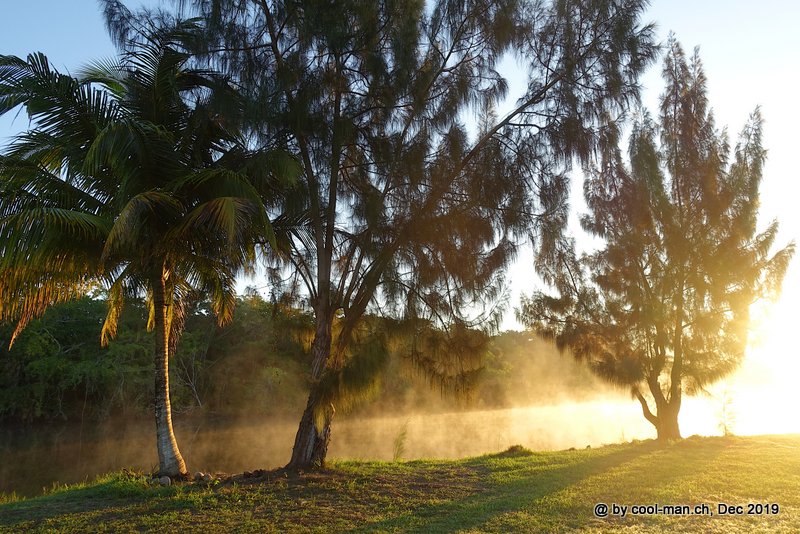
Christmas decoration at a house in Orange Walk
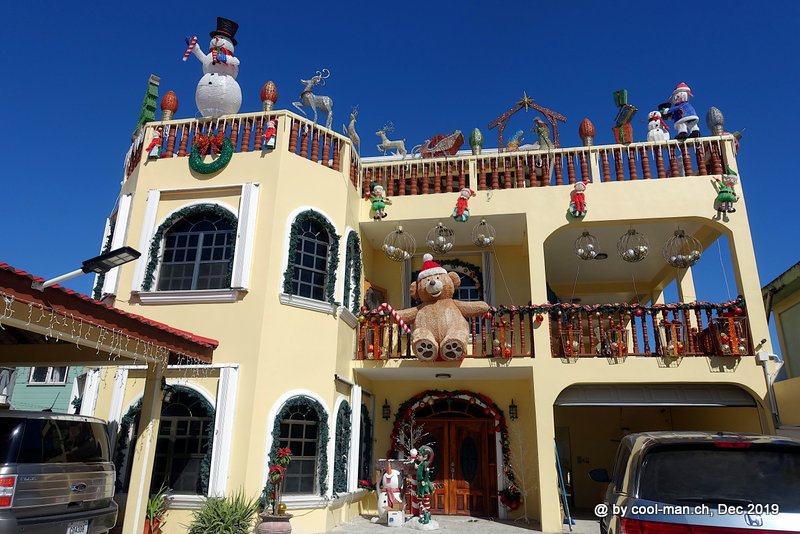
Lamanai
The tourists come almost always to Orange Walks to take the approximately 50 km long boat trip to the Mayan site Lamanai. The river trip led through untouched, impressive landscapes.
River landscape at the New River
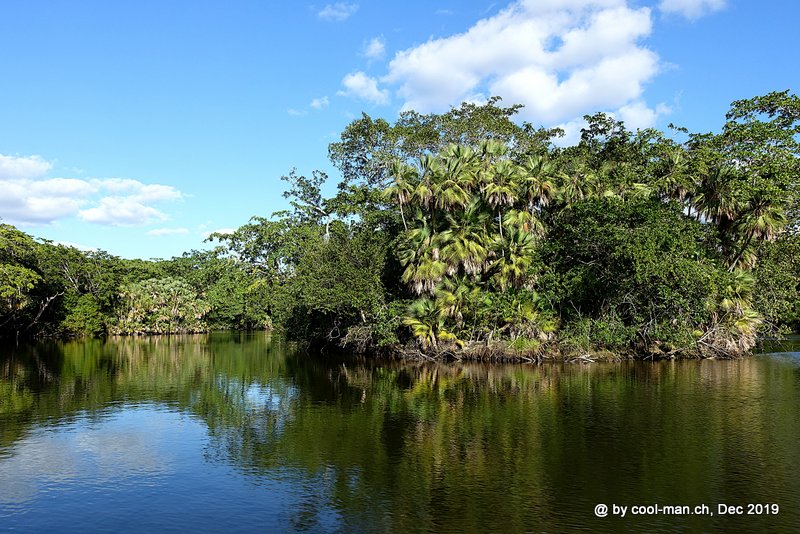
We were on a speedboat from which most of the animals and especially the birds were fleeing. Only the few crocodiles that sunbathed on the riverbank remained calm.
A crocodile sunbathing on the riverbank
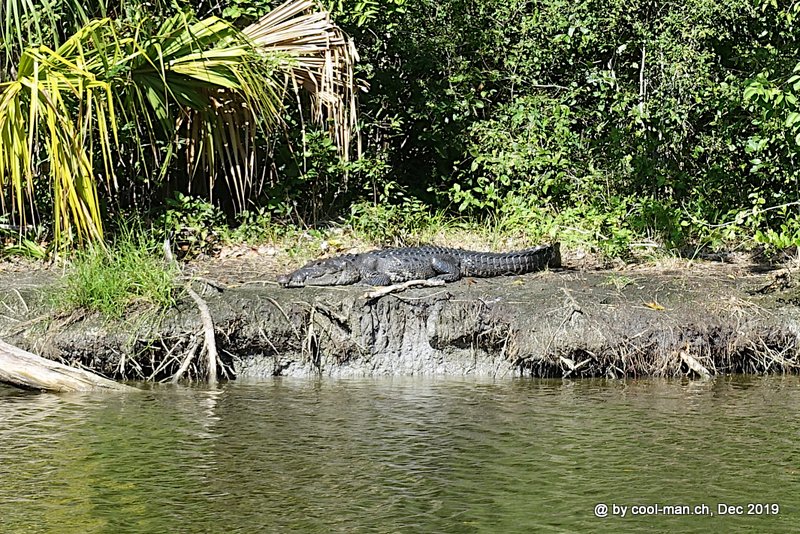
Lamanai is the largest Mayan site in northern Belize and the longest continuously inhabited site in Central America. It experienced its peak from the 4th century BC to the 7th century AD, but unlike other Mayan sites, the city was inhabited until the 17th century.
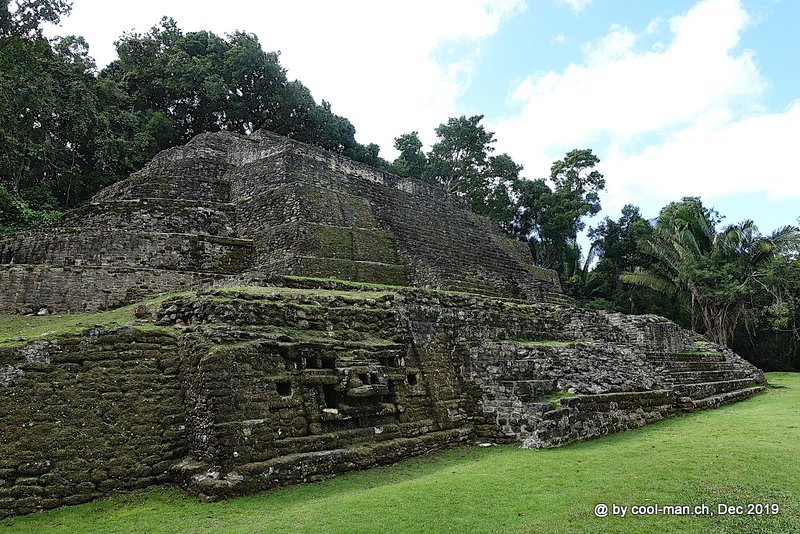

Especially impressive is the mask temple with its two several meters high Jaguar masks on each side.
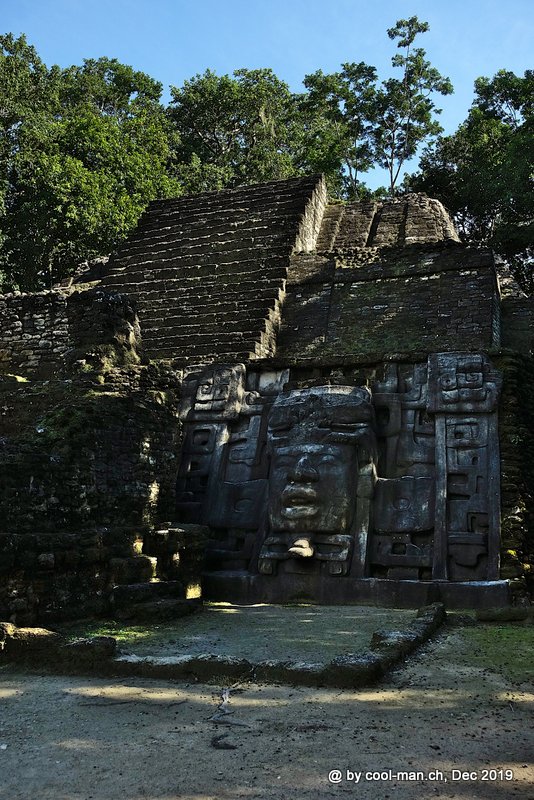
Mennonites
On the boat trip we saw a small boat of the Mennonites living nearby, who transported wood on the river.

With a driver I later visited the Mennonite settlement. They are a religious community founded by the reformer Menno Simon in Friesland, Germany in the 16th century. Again and again they had to flee because of their faith, first to Russia, then to Canada, later to Mexico and since 1958 they live in British Honduras, today’s Belize. They speak an old Low German, but they also learn High German at school so that they can read the Bible. Like the Amish people in North America, the Mennonites reject all innovations of modern technology such as electricity, cars and the Internet in order to live a conservative, godly life. People here travel by horse and cart. Music, dancing, card games, smoking and alcohol are prohibited. With their fair skin, straw-blond hair and uniform dresses, they stand out in Belize. They are very hardworking and economically successful. Since they themselves spend almost no money, the money is invested in new land so that the many children can also practice agriculture. Most of the time they buy virgin forest which is then cleared, for which they have recently been criticized for lacking sustainability. Some Mennonite communities have opened up a little to modern civilization and see the advantages of a car or moped, a washing machine, an electric cooker or refrigerator, but the community remains true to its deeply religious attitude.
Cuello’s Distillery
After I learned that a distillery produces rum near Orange Walk, I wanted to visit it. Although I received an official invitation for a tour and tasting at the office of the distillery in Orange Walk, nobody at the distillery knew anything about my visit, so I could only view the building from the outside. Soon I realized that I didn’t miss anything, because the distillery was pretty run down. It was dedicated to the local mass market that demands high-proof cheap alcohol.

I liked Belize very much, although you get much less for your money than in the neighboring countries. From Orange Walk I traveled further over the nearby border to Mexico.
This text is an automatic English translation from the German original by deepl.com